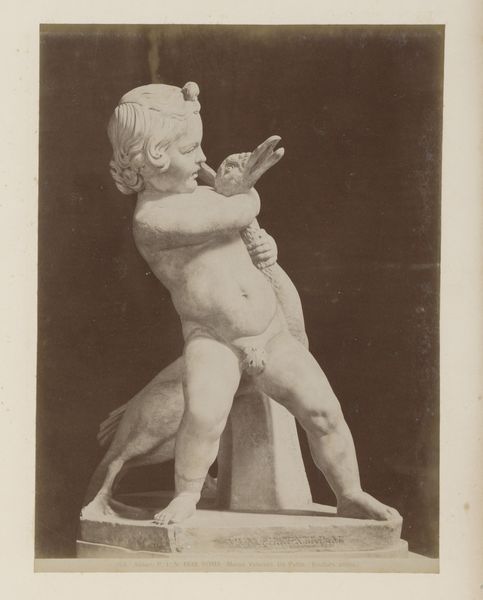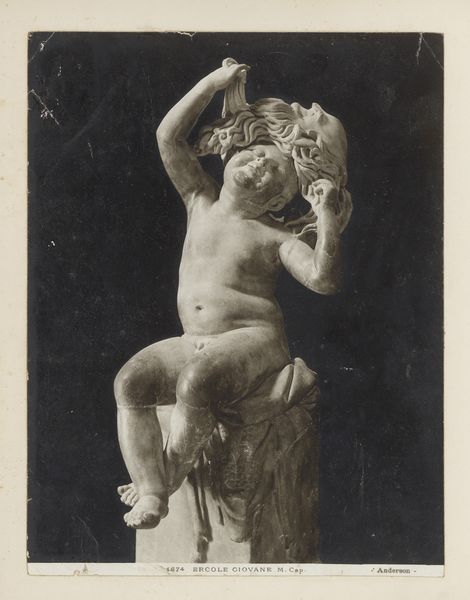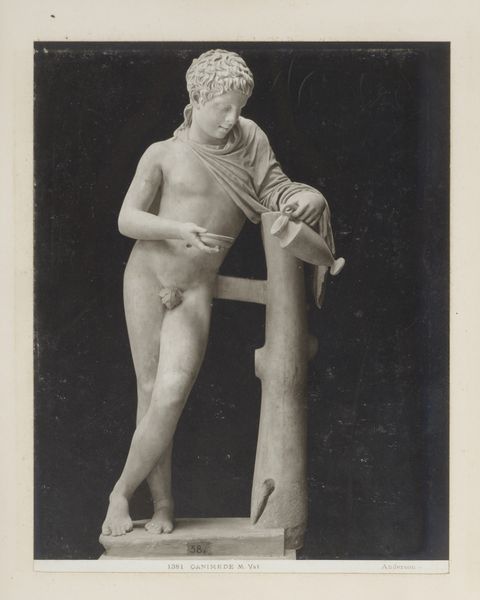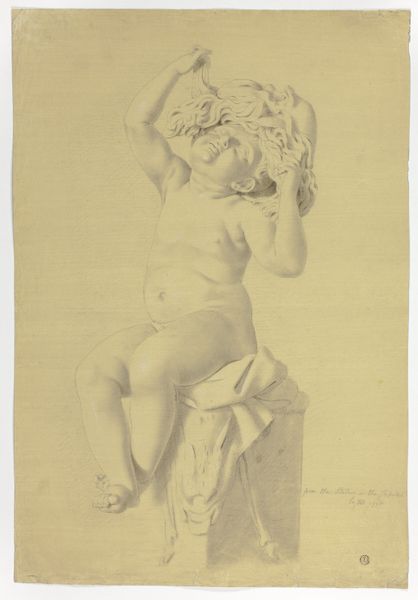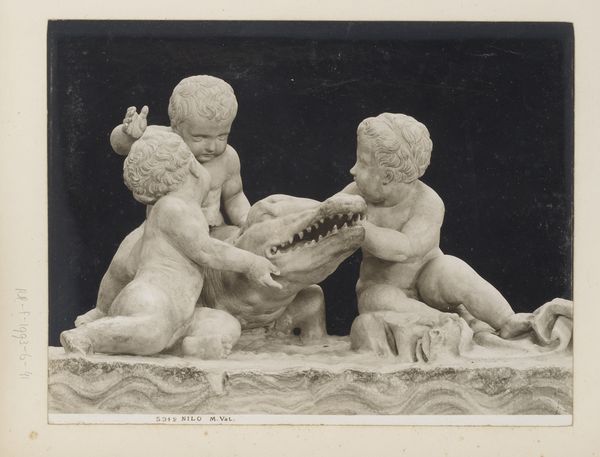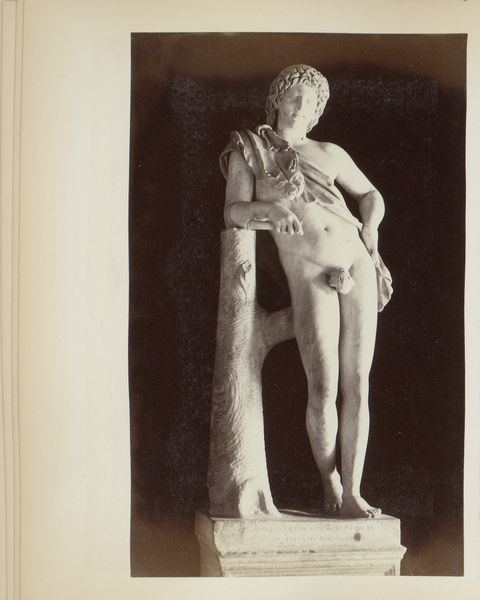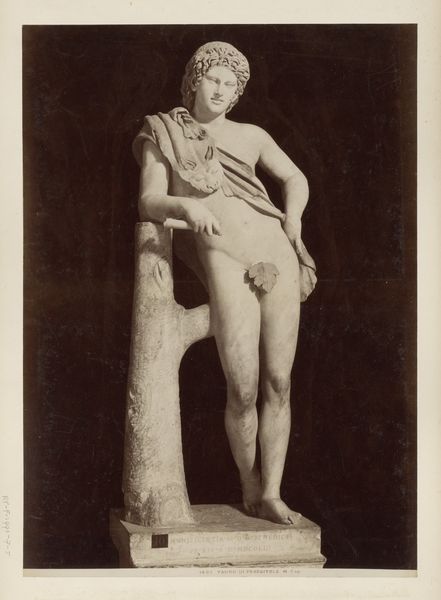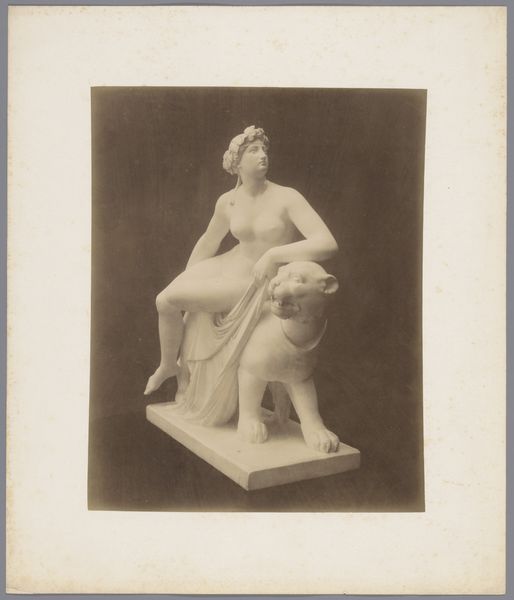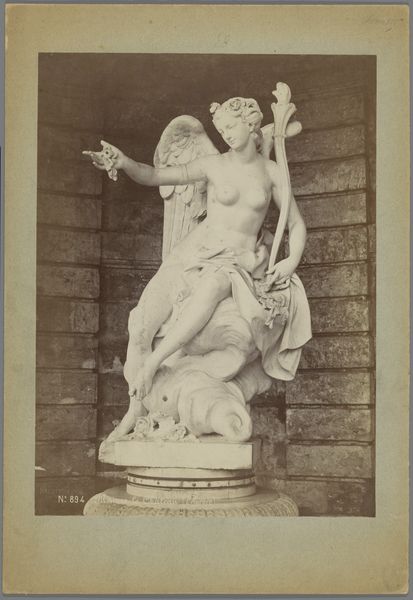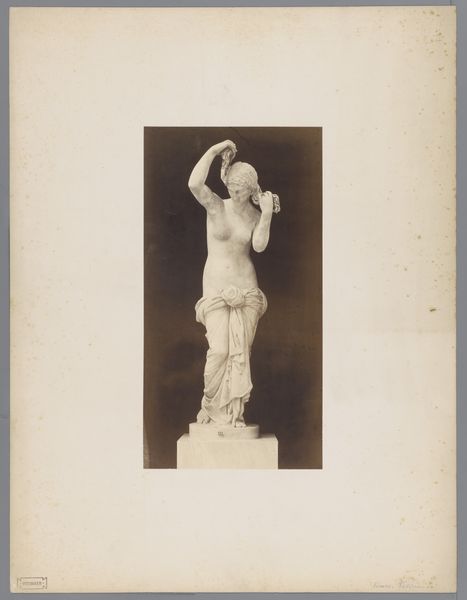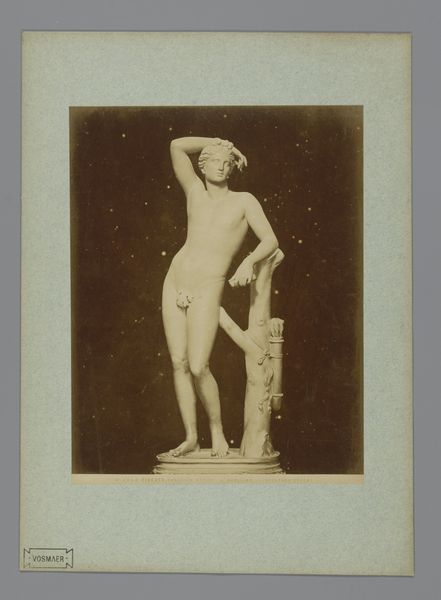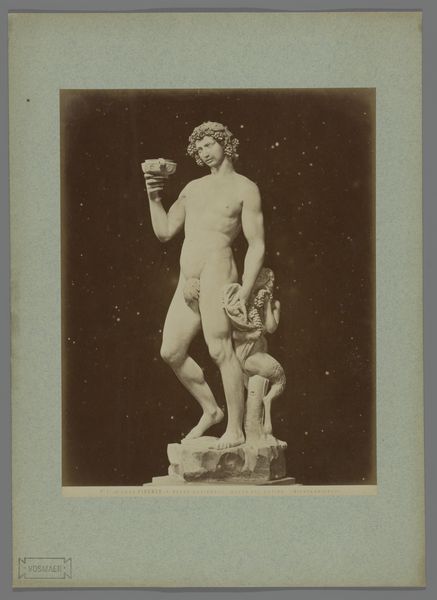
Sculptuur van Hercules als kind met slangen, in de Capitolijnse Musea te Rome c. 1857 - 1875
0:00
0:00
jamesanderson
Rijksmuseum
photography, sculpture, gelatin-silver-print, marble
#
portrait
#
greek-and-roman-art
#
photography
#
ancient-mediterranean
#
sculpture
#
gelatin-silver-print
#
history-painting
#
marble
#
statue
Dimensions: height 260 mm, width 203 mm
Copyright: Rijks Museum: Open Domain
Curator: Welcome. The work we’re looking at is a gelatin silver print titled "Sculptuur van Hercules als kind met slangen, in de Capitolijnse Musea te Rome" attributed to James Anderson, dating from somewhere around 1857 to 1875. Editor: Well, the title is a mouthful, but the image itself—that little dude’s got some serious toddler energy! He's completely unfazed, grabbing these snakes like they're chew toys. Curator: Precisely! It speaks volumes. The photograph captures a sculpture representing a pivotal scene from Hercules' infancy: Hera, in her jealous rage, sends serpents to eliminate him, but the infant Hercules confronts and defeats them, prefiguring his future heroic exploits. It’s an embodiment of innate strength overcoming adversity. Editor: It's funny how different it feels seeing this in a photo rather than directly. I mean, the original marble would have its own gravity, a literal weight. But this photo makes it... a little adorable? Curator: It is the layering of meaning through photographic representation. A statue already laden with symbolic meaning becomes further abstracted into a study of an idea. Think of it this way: marble implies permanence, eternity; photography captures a moment, the fleeting now. By combining the two, we consider immortality mediated by time. Editor: And that’s exactly it! It is that temporal aspect. Like we are given a glimpse into a specific era’s perspective. Do you know anything about Anderson and how he saw all of this? Curator: James Anderson was a British photographer, mostly known for his photographs of Italian architecture, art, and antiquities. He capitalized on the surge in tourism during that era and essentially visually documented historical objects. The photographic process collapses dimensions of time. This makes the works from the past accessible. Editor: Almost like cultural souvenirs. I keep thinking about this little Herc, though. Maybe his success was accidental? It adds a layer to it: triumph isn't just about strength. It can also be goofy circumstance. Curator: Perhaps. We each interpret symbols through the lens of our own experiences. Editor: True. Looking at it, the photograph gives me the space to play with possibilities in a way the marble alone couldn’t. It nudges you towards stories about strength, fate, photography, and the odd heroism of baby Hercules just wanting to play. Curator: It becomes an opportunity to see how the cultural memories embedded in an image evolve over time. Fascinating, isn't it?
Comments
No comments
Be the first to comment and join the conversation on the ultimate creative platform.
